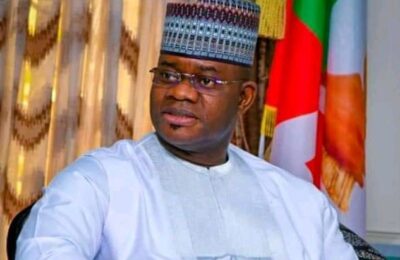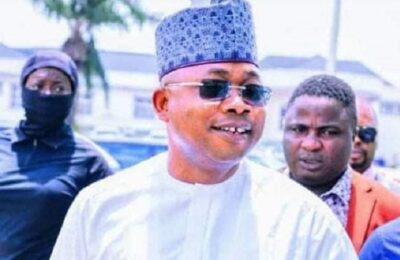ASX-listed Kogi Iron is focusing exclusively on the advancement of its Agbaja iron ore project in Nigeria’s Kogi state which it has advanced over the last seven years.
The significant drop in iron ore prices has more recently seen the company revise its supply aspirations for its production – which through on-going revised test work – appears well suited to the Nigerian steel industry, Kogi Iron chairman, Dr Ian Burston tells Laura Cornish.
Kogi Iron and its Agbaja project (held by the company’s 100% owned Nigerian subsidiary KCM Mining) have an interesting background.
Burston discovered the project seven years back after being invited to visit Kogi State to assess a small iron ore deposit for feed-stock for a proposed steel works facility which comprised a traditional blast furnace and needed iron ore to feed it.
A preliminary feasibility study released by Kogi Iron revealed that the Agbaja mineral resource was a unique sedimentary hosted magnetite deposit with a resource grade averaging 41.3% iron.
Most magnetite iron ore deposits generally grade around 25 – 40% iron.
With selective mining of higher grade material, Agbaja could provide a feed head grade of 45.7%, ranking it in the top quartile of magnetite projects world-wide with respect to resource grade.
Magnetite deposits are typically found in banded ironstone formations (BIFs); however, Agbaja is further unique in that it is a channel iron deposit (CID), with only a few known similar deposits of this kind in the world.
Typical BIF magnetite deposits require large amounts of energy intensive grinding to liberate the iron from its associated natural matrix.
The Agbaja CID material is relatively soft and friable, and requires moderate grinding and simple magnetic separation to produce a coarse grind particle size to enable liberation of the iron.
Consequently, projected mining and processing costs for the Agbaja project are relatively low compared to other magnetite projects.
A change in direction
Despite the ore characteristics, which the company was considering exploiting through ‘direct shipping’ in 2014, a significant drop in iron ore prices required the company to explore other financially viable options for selling its product.
The last three years have been spent determining if impurities (phosphorus, alumina and sulphides) could be metallurgically removed.
“We have now developed a process which will produce a ‘cleaner’ material or more specifically a steel billet which can be used in electric arc furnaces in conjunction with scrap metals feeding the steel works. This will sweeten the overall product, in turn helping to improve and develop the Nigerian steel industry,” Burston highlights.
It is also envisaged that production drilling and blasting during mining will not be required as all material is regarded soft and friable, and amenable to ‘free-dig’ in an open cast environment. The magnetite ore body sits approximately 8 m below the surface.
Recent activity and process moving forward
South Africa-based state-owned research utility Mintek has conducted “serious” laboratory test work to date on the Agbaja ore.
Moving forward, additional test work will be required to commercially prove that the material can be processed viably to produce a steel billet of adequate quality for the steel industry.
This test work is expected to be completed by the end of 2017, with work proceeding when funds are secured. Burston says the company will also evaluate export opportunities/potential as well.
A Nigeria-based company called PW Group has been responsible for mining the material required for the forthcoming test work.
Once this commercial test work is concluded, Burston states that the company will need to complete a definitive feasibility study whilst looking for a venture partner to acquire the project or contribute to this work. “Otherwise, we are determined to see this project through to production, even if it means moving forward alone.”
With the necessary funding in place, the company will complete the pyro-metallurgical test work, a financial analysis to prove the project’s financial viability and also finalise its plant design using South African-based engineering group, Tenova.
For now, Burston is considering a modest plant which Tenova has started designing to produce 0.5 Mtpa of steel billet. Once in production, it would take a year or two to “settle in”.
Considering the larger mining leases contain some 7 Bt of iron ore “and possibly more” it seems feasible that the company could build a 5 or even 10 Mtpa iron ore production facility.
The original preliminary feasibility study was, in fact, based on a 5 Mtpa of direct shipped ore from only 20% of the Agbaja Plateau area, which at the time was determined to deliver a 35 year lifespan.
Drilling of part of the Plateau has produced a current JORC mineral resource estimated at 586 Mt at 41.3% iron.
The majority of the mineral resources are classified as indicated (466 Mt at 41.4% iron), the balance are classified as inferred (120 Mt at 41.1% iron).
Ultimately, if the above work goes according to plan, and financing can be put in place, Burston hopes to see construction start-up towards the end of 2018.
Total construction costs will be developed during the engineering design phase of the definitive feasibility study.
The company is also proceeding with work on its mining, environmental and social licences to minimise any delays to this timeline.
Working in Nigeria, working with neighbouring communities
The Agbaja Plateau lies 15 km north-west of the city of Lokoja in Kogi State, and 165 km south-west (by highway) from Nigeria’s capital city of Abuja.
Lokoja has reticulated electrical power, cellular telephone networks, primary and secondary schools, hospitals and other amenities.
Abuja, being the political capital of Nigeria is a well-established and serviced city; it has a large international airport with daily flights to Europe, the middle-east and other African destinations.
Importantly, Agbaja is close to existing, under-utilised river transport while also in close proximity to power distribution lines. The proposed process will also generate its own power with excess to be fed back into the grid.
“Developing social and communal infrastructure for nearby populations is also important as they have very little access to infrastructure which most take for granted.
We are taking this responsibility seriously which will uplift our communities to provide better livelihoods.
We will also provide workplace training and provide employment which is of prime importance to the government.
Job opportunities for local people will also help stabilise and grow community skills and interests.”
Kogi Iron’s subsidiary, KCM Mining, currently runs two farms which provide two crops a year of yams and corn which it distributes to the occupants of the land in that area.
It has also refurbished a local Muslim mosque and Christian church and further to this is also conducting road maintenance in and around its project area.
Working in Nigeria a plus
While Nigeria’s mining industry is still in early stages of development, the government has a strong desire to grow this sector and has established a 10 year roadmap designed to achieve significant growth over the coming decade.
“Consequently, we have a solid relationship with both the Federal and State government who have continued to show their support for our project and continue to offer their help as we move forward.
“Legislation is also worthy of praise, the mining code is similar to Western Australia’s and is transparent, clear and easy to work to,” Burston highlights.
An interesting career
Burston’s career was not initially intended for the mining sector, he graduated as an aeronautics engineer in the 1950s. After completing a national service obligation with the army, he returned to university to complete a mechanical degree.
He walked away unharmed when taken hostage by gunmen in Istanbul in 2001.
During his career, he has developed several multi-million tonnes per annum exporting operations with outstanding track records in maximising production, transport efficiency and project development.
Over the decades he has worked with the South Australian Electricity Trust supplying open cut coal for the State’s generation capacity, was in charge of electrical and mechanical maintenance of Zinc Corporation’s Broken Hill silver, lead and zinc metallurgical concentrators.
Time was also spent in the late 60s developing a bauxite mine in the Northern Territory.
During the 70s and 80s Burston worked with Hamersley Iron building and operating mines, railways and ports. In the latter years, he became MD of the company.
Burston has previously served on the board of African Iron as chairman and on the board of iron ore miner Fortescue Metals Group. He was also involved in a number of mining services companies as non-executive chairman of NRW Holdings (civil construction) and as a board member of Mincor Resources (underground nickel mining).
Credit: MiningReview




